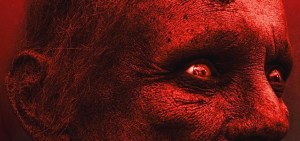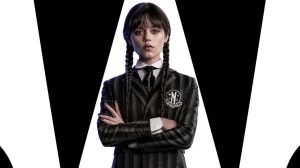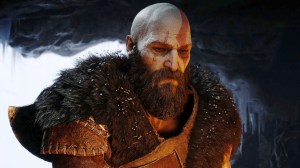It was an announcement met with surprise and excitement last year at The CW‘s network Upfronts in New York: Batwoman would be coming to the Arrowverse as part of the “Elseworlds” crossover event. A few months later, well before the hero made her big debut, the network stunned again with the announcement that a full-on Batwoman solo series was in development with eyes on a 2019 debut. In the year since, Ruby Rose was cast in the role, fans were excited by her “Elseworlds” debut, the show went from being “in development” to getting picked up to series, and by the time this year’s Upfronts rolled around fans got their first look at Rose as Kate Kane, making her first steps towards suiting up as Batwoman in a first-look scene from the upcoming series.
Videos by ComicBook.com
However, even from the first mention of the flame-haired vigilante’s coming to the Arrowverse there’s been a constant specter of another Gotham-based hero — the iconic Dark Knight himself, Batman. Why not have a Batman show, many have asked. How long until Batman shows up on Batwoman, others have wondered. Some have even questioned the validity of Batwoman as a hero at all, complaining about how, in the teaser scene, Kate Kane cracks that Bruce Wayne’s left-behind Batsuit will be perfect once it fits a woman’s form. Batwoman may be the hero Gotham has, but people won’t stop suggesting that Batman is what they need.
And for as great a character Batman is, they’re wrong. It’s Batwoman, not Batman, that is the hero that the Arrowverse truly needs and here are five reasons why.
Batman’s story has been told. And told. And told some more.

Do not get me wrong: Batman is iconic. From a personal perspective, I’m in the camp of the more Batman, the better. He’s one of my top ten favorite comic book characters of all time and when it comes down to the little hints and teases about the Dark Knight in the Arrowverse, I got just as excited as anyone else.
That said, Batman is an iconic character. His story has been told over and over again on both television and movies and, though some of the storylines and details may change, the nuts and bolts are the same. Young Bruce Wayne lost both of his parents due to a horrible crime very indicative of how jacked up Gotham City is, then grew up to take on the crime and corruption responsible for his parents’ deaths by suiting up and becoming the thing in the night that evil fears. Most variants of the story have him being all-consumed by his crusade to the point that the real man is Batman while “Bruce Wayne” is his costume, one that is dressed up as a billionaire playboy with his own issues — such as drinking and womanizing. It’s not a bad story. It’s just the same story time and again. The closest thing we’ve gotten to a “fresh” take on that take was Fox’s Gotham, but, again, we’ve already gotten it.
And the Arrowverse already has its “Batman” in Oliver Queen.

Keeping with the idea that Batman’s story has already been told time and time again, the Arrowverse itself has already kind of done its billionaire playboy/secret vigilante story with Arrow. There are unmistakable parallels between Arrow‘s Oliver Queen and Batman. While Oliver’s backstory is a bit different, his behavior and even his villains are not. Oliver presents himself — at least in the earlier seasons — as a hard partying, womanizing rich guy that most people don’t take seriously at all while at night he’s suiting up to take down bad guys in his corrupt, crime-ridden hometown. In fact, Arrow has had so many similarities to Batman’s stories that some have even gone so far as to refer to Oliver Queen — and his portrayer, Stephen Amell — as “Walmart Batman”, the implication being that the character is just a generic version of the genuine hero. While that might be too extreme a characterization, especially given the leaps and changes Arrow has seen in the past few seasons, the point remains that a Batman-like story with a Batman-like hero has already been done by the network. Thank you, next.
Batwoman is a better fit for the network’s “Open to All” inclusiveness campaign.

The CW is open to all. It’s an assertion that various promos and other efforts have frequently highlighted since the debut of the “Open to All” inclusiveness campaign last fall. What that campaign is meant to highlight is that the network is committed to diversity. That means that the network not only has diverse talent behind the cameras with writers and creators, but in front of it as well and Batwoman fits that bill. By centering on Batwoman and Batwoman alone, the series brings the number of female-led superhero shows on the network up to two (while one could make a side argument for DC’s Legends of Tomorrow being led by female heroes, that team is a genuine ensemble rather than a solo show). In the specific case of the Arrowverse, that makes things pretty much even now which is a more accurate representation of the United States population per census data from 2010 that noted 50.8% of the population is female.
Add on top of the female representation that Batwoman brings, you’ve also got the fact that the character is canonically lesbian. That means Batwoman also brings additional representation for the LGBTQ community. It’s also in line with the network’s efforts towards inclusivity. And, for those who like to make the argument about “forcing” these kinds of diversity, remember: Batwoman is lesbian in comics. It’s part of her story. Nothing here is being forced.
Batwoman opens the doors for even more interesting heroes and characters.

There are quite a few heroes in the Bat family, but when you have Batman as the central hero in the story, there are usually only a few of the additional characters that most people think of — like Robin, Nightwing, and Batgirl. There are many, many more than that. By going down a less traditional route and focusing on Batwoman, the series could end up as an opportunity to bring in other characters that fall under the Bat family umbrella that might otherwise not get a chance to shine — and it’s something that we already know that Batwoman will do to an extent. Camrus Johnson will play Luke Fox on The CW series. As comics fans know, Luke Fox is Batwing and while the series is unlikely to introduce a ton of characters right away, it’s not impossible to think that we’ll eventually see Flamebird/Bette Kane, The Signal/Duke Thomas, Bluebird/Harper Row, or others.
Batwoman is a genuinely interesting character in her own right.

Because Batwoman operates in Gotham in comics and on Batwoman it’s easy to forget that the character is a hero in her own right. In fact, it’s part of her comics backstory that she pursues her own heroic journey when she saves herself from a mugger before Batman can even show up to aid her. In fact, Kate easily defeats the bad guy with Batman being left to do nothing more than offer her hand to get up from the ground. Inspired by the encounter with Batman — and that she was able to handle the criminal herself — Kate starts fighting crime herself. Initially she uses military body armor and weapons that she steals from her father’s military base, but ultimately accepts his help and gets intense training and, eventually, her own Batsuit.
It’s a cool backstory, but it’s not even scratching the surface about what’s interesting about Batwoman. Batwoman has taken over for Batman when the character died in Detective Comics, which is an interesting turn all its own. There’s also the defining moment in her origin that sets her apart. While Batman is defined by the tragedy of his parents’ murder, Kate’s childhood trauma is only part of her story. For Kate, a moment that defines her is when she was forced to leave the United States Military Academy for being gay. All of these things come together to create a character that will be interesting to explore on her own — without Batman showing up.
Bottom line? Batman is cool, but so is Batwoman. It’s her time to shine.
Batwoman debuts on Sunday, October 6th on The CW.









